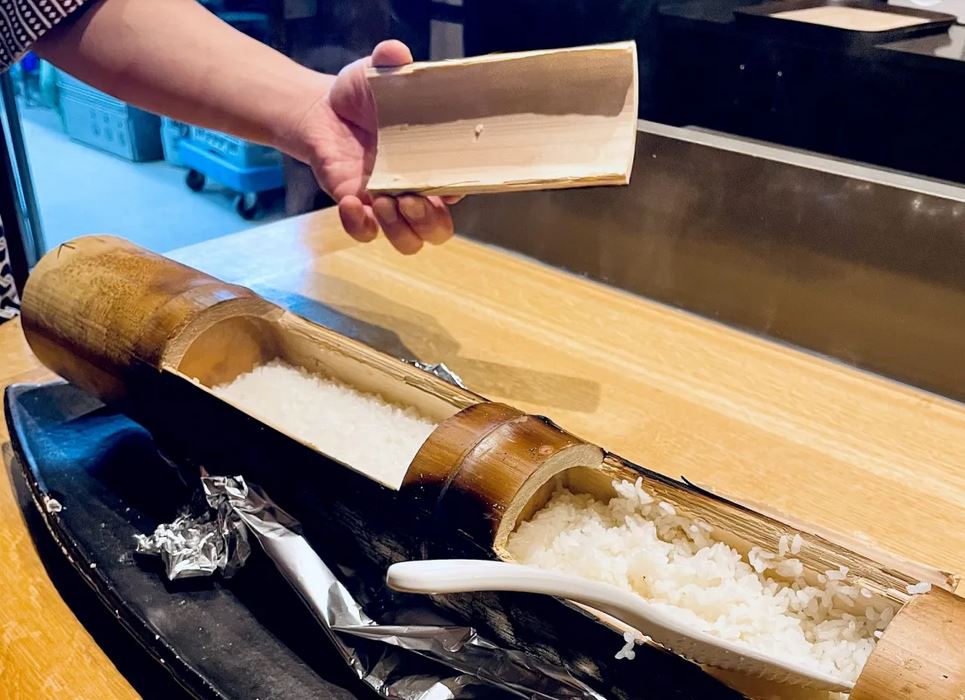 Rice cooked in bamboo at Japanese promotional dinner (photo by Laura Hayes, Washington City Paper)
Rice cooked in bamboo at Japanese promotional dinner (photo by Laura Hayes, Washington City Paper)
Mar 11, 2022
TOKYO, JAPAN – Japan’s culture has long been interwoven with their rice industry, however for many years it has been something they keep close to home, consuming nearly the entire domestic crop. But with a decreasing population and decreasing consumption of rice, they have started to look for other options.
Things started to get serious in 2016 when the government of Japan commissioned a report looking at Japanese agricultural export potential by McKinsey & Company, a world-renowned management consulting firm that’s known for helping their clients make major financial and management investments to deliver results.
In 2017, the Japan External Trade Organization launched an agricultural export branch, called The Japan Food Product Overseas Promotion Center. This new export promotion arm has been significantly funded by Japan’s Ministry of Agriculture, Forestry and Fisheries (MAFF).
After several years of work behind the scenes, the Japanese government announced the Export Expansion Action Strategy for Agriculture, Forestry, and Fishery Products, and Food in late 2020. The strategy has primarily been pursued by MAFF with a goal of reaching $19 billion in agricultural exports by 2025 and $48 billion by 2030, more than quadrupling current export sales. MAFF is specifically targeting an increase from roughly $45 million in rice sales in 2019 to $103 million in 2025, with about a quarter of that earmarked for the U.S. market.
In Japanese fiscal year 2021, MAFF budgeted more than $45 million to fund their agricultural export promotion efforts in addition to commodity specific programs that help farmers develop new channels to utilize rice outside of the domestic table rice sector.
Some of that 2021 budget was allocated towards market research into how the U.S. and European japonica rice (medium grain) industries promote their products. The research appears to be exploring potential opportunities for market growth where Japan could take market share or learn from efforts undertaken by the well-established California and European medium grain exporters.
Additionally, last fall, the Japanese Embassy in Washington, DC, hosted an event for top DC-based chefs to promote Japanese rice to be incorporated into their menus.
“U.S. consumers are increasingly concerned with their environmental footprint when it comes to food, and chefs are well aware of this,” said Michael Klein, USA Rice vice president of communications and domestic promotion. “Rice from Japan is no doubt an interesting novelty and perhaps could be a status symbol for those unconcerned with racking up food miles. Farmers right here in America are able to provide a high-quality, safe, sustainable, reliable product at a more consistent price point for the domestic market and, absent a subsidy, it would be difficult for Japan to really compete with us.”
Japan has been successful in high-value markets like Hong Kong and Singapore at eroding market share from other origins, including the U.S. But, despite Japan’s aspirations to steal market share in the U.S., cost of Japanese rice has been a major factor with Japan’s domestic rice prices near $2.00 per kilogram and incorporating high freight rates during the pandemic. U.S. rice imports from Japan over the last five years remain steady, between 1,500 and 2,370 MT annually.